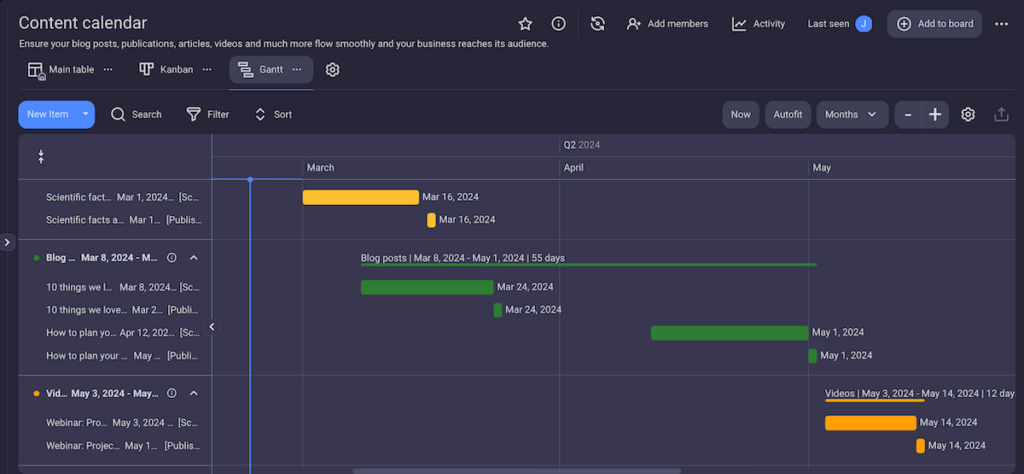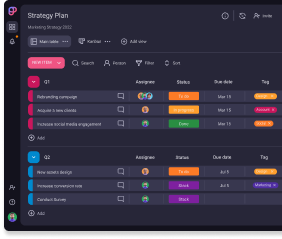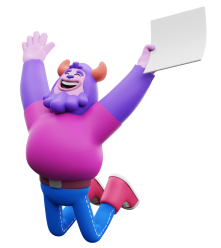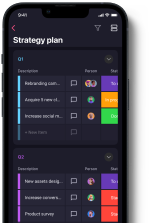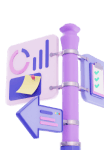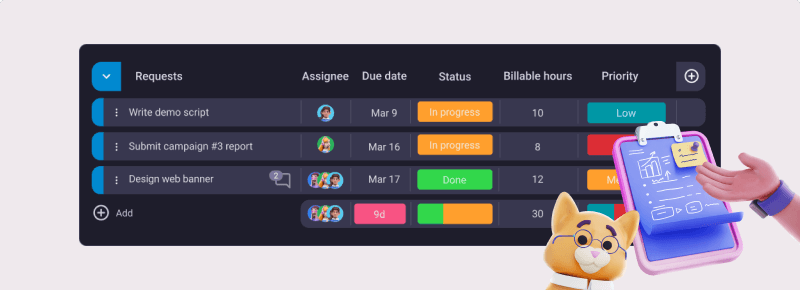What is a text without a reader, a video without a viewer, or a photo without anybody to look at it?
It’s the content that didn’t fulfill its main purpose — appealing to its target audience.
Any content plan that attracts your target audience — thus making your content meaningful — can be freely called a perfect content plan.
However, content planning is easier said than done.
Luckily, in this blog post, we’ll show you the way toward a perfect content plan in 5 simple steps.
We’ll also provide a content plan template and some valuable tips from marketing experts.
So, keep reading.

- A content plan is a tactical step-by-step process of creating meaningful content to achieve specific strategic goals.
- A content strategy is a more general term than a content plan and implies setting broader goals and objectives to achieve business growth.
- To create a good content plan, you need to set goals, analyze your target audience, select a suitable platform, establish a content calendar, and regularly measure results through audits.
- A good content plan helps content creators stay organized, generate ideas, properly link their content with their offerings, and schedule when and what they will publish.
Table of Contents
What is a content plan?
A content plan is a tactical step-by-step process of creating meaningful content to achieve specific strategic goals.
According to Gareth Hoyle, Managing Director at Coveragely, a content plan should include the following details:

“A good content plan will detail who is creating the content, what kind of content is being created, when and where it will be published, along with why it’s being written and how it will be marketed and analyzed (including how it will be measured). It will also include details on the target audience, the tone of voice as well as the proposed style and formats, as not all marketing content is written, it could be audio, imagery, or videos.”
Whether driven by marketing campaigns or not, content planning contributes to your business objectives in 2 ways:
- Directly — with increased traffic or higher sales, or
- Indirectly — by raising brand awareness and respect.
Either way, successful content planning is likely to convert your content consumers into potential paying customers.
How to create a content plan in 5 steps?
The 5 basic steps for creating a perfect content plan include:
- Setting your goals,
- Analyzing your target audience to determine the appropriate content,
- Choosing an appropriate platform for your content,
- Creating a content calendar, and
- Measuring results and running audits.
Let’s dive into the details of each step.
Step #1: Setting your goals
The starting point of any good content plan should be proper goal setting, as it steers you in the right direction from the very beginning.
It’s important that your goals are clear and specific. As Gareth Hoyle explains, poorly defined goals often bring negative results:

“You could spend a long time creating a large piece of content and see absolutely no success from it. This is why goal setting at the start is imperative, so you can determine what success (or failure) looks like.”
A staff writer with Fit Small Business, Michael DeVault, explains the importance of setting specific goals:

“And no, ‘Get more customers’ isn’t a specific goal. ‘Rank on Google for this particular keyword’ is a specific goal. That means you’re going to have to roll up your sleeves and dig into some data about how people are finding businesses similar to yours. If you just go create content willy-nilly, your website is most likely not going to rank well.”
All in all, proper goal-setting helps align content with your objectives, as well as measure your content’s success.
💡Plaky Pro Tip
If you’re not sure whether your goals are clear enough, read the following blog post:
Step #2: Analyzing your target audience to find appropriate content
To create the right content for your target audience, you need to meet your audience first.
Our contributor, Shanna Morgan, a PR Strategist at NightSky PR, says that one way to truly understand your target audience is to actually talk to them:

“Ask good questions and inquire about why they feel the way they do. This seems incredibly obvious, but you would be surprised how many marketers don’t talk to their target audience. Instead, they assume and scratch their head when the content falls flat. Always start with informational interviews with your audience to guide you toward what they care about.”
Also, you can always conduct keyword research on Google and incorporate some SEO (Search Engine Optimization) tools into your content planning process.
Gareth Hoyle suggests in-depth research to get into the mind of your target audience:

“There are various research methods including keyword research, social listening, and competitor content analysis as well as looking at what topics are currently being discussed in the wider media landscape. Tools like SEMrush, Ahrefs, Buzzsumo, and Talkwalker can help you better understand your target audience’s preferences, search behavior, and content engagement patterns.”
Here’s how Farhan Siraj, the Co-Founder and CEO of OSHA Outreach Courses, finds inspiration for the appropriate content:

“I employ a cocktail of tools to ensure a well-rounded strategy. Google Trends is my go-to for identifying evergreen topics by revealing what remains consistently in trend. This allows me to create content with lasting relevance. Ahrefs provides insights into competitor strategies and helps me identify gaps and opportunities to set our content apart. Lastly, Buzzsumo offers real-time trending data. I believe content strategists should create their own cocktails of tools to create an effective content strategy.”
Step #3: Choosing an appropriate platform for your content
Once you’re familiar with your target audience, it’s time to focus on choosing appropriate channels for placing your content.
To know which platform to use, firstly, you need to understand your target audience’s:
- Social media habits and preferences (e.g. specific platforms they use), and
- How they consume content (e.g. audio-visually).
The CEO of Flawless SEO, Israel Gaudette, explains that you should choose the right platform based on the purpose of your content:

“You need to think about the platform that is most appropriate for your content based on its purpose. If you’re looking to reach a very specific audience, then you should use a platform that has a large number of users in that group. If you’re looking to get your message out there as widely as possible, then you should choose a more general-purpose platform like Twitter or Facebook.”
Communication Consultant Jamie Levin explains why choosing the right distribution channel matters:

“Your audience will drive how you communicate, when you communicate, where you communicate, and more to reinforce the intentional planning behind your content plan. When thinking about your target audience, how do they like to receive their news? Do they prefer a text, an email, a video, a social post, recognition in a newsletter, etc.? Even if the materials are spot on, if the method in which one is communicating is not aligned with the preference of the target audience even the most perfect content won’t reach the end-user.”
Knowing your goals and audience are key factors in determining the right platform for your content.
Step #4: Creating a content calendar
Managing content on multiple platforms can get quite challenging, as you need to keep track of several timelines at once.
Luckily, content calendars are a useful asset in planning when and where you will publish your content.
Israel Gaudette cites deadline-related issues as one of the biggest challenges in content planning:

“When you are working on a new piece of content, it’s easy to feel like you have an infinite amount of time before it needs to be finished, but once the deadline is upon you, there’s a lot of pressure to get things done fast. That’s why I recommend creating a schedule as soon as possible—it will help keep you on track and ensure that your content is ready with plenty of time to spare!”
Using a content planning platform such as Plaky facilitates the overall content organization and the creation of a content plan.
As a perfect content planning tool, Plaky offers a pre-made content calendar template that can spare you the trouble of creating your content calendar from scratch.
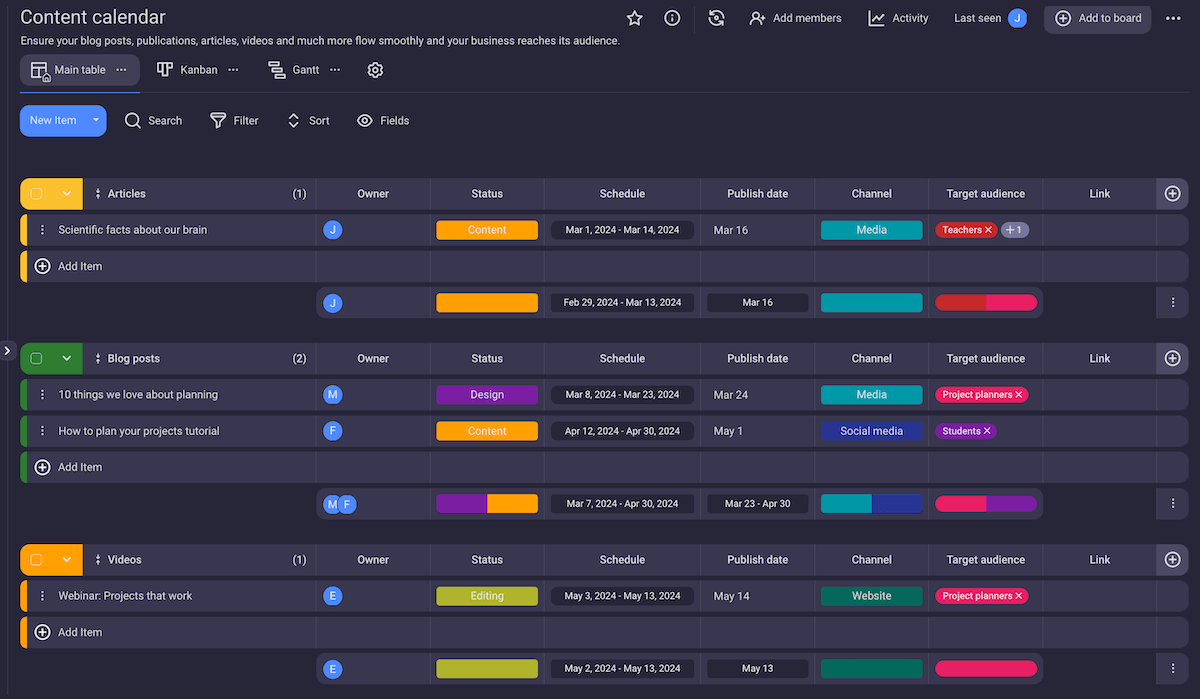
As you can see in the picture above, Plaky’s content calendar template allows you to break down your content by types (e.g. articles, blog posts, and videos).
You can also add further content details within Plaky’s fields, such as:
- Owner — to tag content creators,
- Status — to specify the content production phase (e.g. design or editing phase),
- Publishing date — to keep track of task or project deadlines and planned publishing dates,
- Channels — to specify the chosen platform,
- Target audience — to specify who the content is intended for, and
- Links — to attach drafts or final versions of your content.
If you’re looking specifically for a social media calendar, Plaky also offers a social media calendar template for free.
💡 Plaky Pro Tip
To learn the difference between editorial and content calendars, read this blog post:
Step #5: Measuring results and running audits
An important part of content planning is measuring success and optimizing your content and content plans accordingly.
As stated in The State of Content Marketing 2023 Global Report, 61% of marketers conduct content audits 2 or more times a year.
The same research found that running regular audits has several advantages:
- It prevents your content from becoming outdated,
- It increases engagement, and
- It increases traffic.
A good way to learn how your target audience responds to your content is to consider the following metrics:
- Organic traffic,
- Search rankings,
- Leads,
- Conversions, and
- Social shares.
The Co-Founder and CMO of GreenPal, Gene Caballero, agrees that content requires ongoing attention and refinement:

“Continuously monitor your content’s performance, be ready to adapt to new trends or audience preferences, and always be looking for ways to innovate.”
After all, as Farhan Siraj highlights, engagement should be at the core of any content planning strategy:

“Content planners should think from the perspective of the audience they are trying to reach, understanding that no one enjoys dull, uninteresting content. Engagement goes beyond merely capturing attention; it’s about sustaining that interest and fostering a connection with the audience. When content is engaging and entertaining, it keeps the audience coming back for more, sharing it with others.”
Sara Jensen, the owner of Brighter Messaging, says that they regularly audit content and make updates at Brighter Messaging, particularly with content that has lots of traffic or driving conversions.
Sara shares that they also conduct regular audits with content that isn’t performing well:

“We measure audience response in a few ways, depending on the content. First, did the content move up in organic rankings? Is it getting more organic traffic? If it’s a piece that offers an opportunity to convert or drive leads, we look at those metrics as well.”
What’s the difference between a content plan and a content strategy?
As explained by the Content Marketing Institute, “content strategy” is a more general term than “content plan”.
Creating a content strategy includes setting specific goals and objectives that a company wants to achieve, thus making space for business growth.
Here are some of the objectives a content strategy can have:
- Increasing the revenues,
- Lowering the costs,
- Acquiring new customers,
- Educating the audience,
- Entertaining the audience, and more
A content marketing plan is a tactical step-by-step guide that outlines all the specifics of how you plan to execute your strategy, such as:
- Who on your team will be doing what task,
- Who your target audience is,
- What type of content you will produce (e.g. audio, visual, or written),
- Topics you will cover, and
- When and where you will publish the content.
It’s important to remember that only after you’ve determined your content strategy, can you move on to crafting your content marketing plan.
💡 Plaky Pro Tip
If you want to learn how to make a perfect strategic marketing plan, make sure to read this blog post:
Why is having a content plan important?
Having a good content plan should help you deal with some of the common obstacles content creators face every day, such as:
- Staying organized,
- Running out of ideas for your content,
- Finding the best way to link content with your products/services,
- Knowing when and what you’re going to publish in advance.
Here’s an example of how having a good content plan helped out Israel Gaudette:

“I’ve seen a lot of content that’s been successful because it’s been planned out very well. For example, I worked with a client who was creating an e-commerce store for an audience of people who were looking for specific products. The client had a lot of data about the types of products that were in demand, but they weren’t sure how to present them in a way that would be useful to their audience. We looked at our analytics and found that people who were looking at certain types of products tended to look at other types of products as well. So we created a plan that focused on presenting related products together.”
And, here’s how content planning helps Julia Voloshchenko, PR Manager at Usetech, solve a problem many content creators face:

“[A common problem is] frantically searching for topics about what you want to share. When you search for a topic in a hurry, nothing good will come of it. It’s better to have a plan in front of you that you can adjust, if anything. Or this problem might be otherwise called — ‘nothing to publish.’”
8 content planning tips by experts
In the following section, we’ll highlight 8 content planning tips that our expert collaborators use on a daily basis.
Keep reading to learn more about their practices.
Tip #1: Align content with wider business goals
As Gareth Hoyle explains, your content should have a wider business purpose:

“From a marketing perspective, aligning the content with broader business goals is important because it makes it easier to sell the idea to senior stakeholders. Moreover, it will give the content a business purpose rather than being seen as writing content for content’s sake, which is an easy trap many businesses fall into”.
Tip #2: Listen to your audience
To create meaningful content, you need to listen to your audience.
This is what Shanna Morgan, PR Strategist at NightSky PR, practices regularly — actually engaging in meaningful dialogue with the audience.
Once you’ve gained their feedback, Shanna suggests segmenting the feedback into the following 4 categories:

- “Assumptions: These are the myths, beliefs, or perceptions they have about the topic. From here, I decide whether to reinforce or correct them in my content.
- Annoyances: These are what your audience finds frustrating. Here you can create content that offers solutions.
- Aspirations: These are their goals. What do they want to achieve? Tailor your content to help them reach those goals.
- Alternatives: This is what they’ve tried in the past but hasn’t worked. Here you can provide better options or go deeper into why certain methods didn’t meet their expectations.”
With these 4 categories, Shanna adds, the content topics are endless.
Tip #3: Segment the audience
According to Jeff Mains, the CEO of Champion Leadership Group, audience segmentation is one of the practices that has consistently brought positive results:

“I start [content planning] with audience segmentation. Instead of writing generic content, I spend time researching a brand’s broad customer base. By segmenting the audience based on demographics, preferences, and behavior, I create content for each audience persona to address their needs and pain points. This targeted approach ensures that the content resonates more deeply, resulting in higher engagement and conversion rates.”
Tip #4: Set aside time to brainstorm
According to the CEO and Cofounder of Instrumentl, Gauri Manglik, taking time to think is crucial for creating a strong content plan:

“In my experience, my most important piece of advice would be to set aside time to brainstorm. You’ll never be able to come up with the best ideas if you’re rushing around in a panic trying to get it all done. Take the time to sit down and think through your content calendar for the week, month, or year. I’ve found that taking the time to figure out what kind of content you want to make is crucial when it comes to creating an effective plan. That way, you can make sure that your audience is getting what they need from you and that you’re spending your resources wisely!”
Tip #5: Prioritize evergreen content
Our collaborator, Farhan Siraj, highlights the importance of creating evergreen content:

“Create blog posts, videos, and eBooks that will remain relevant and valuable to your audience over an extended period. To achieve this, focus on creating content that addresses timeless topics, fundamental concepts, and common questions in your niche. Avoid trends and short-lived topics that quickly become outdated.”
Tip #6: Leverage trending topics
Jeff Mains adds that leveraging seasonal and trending topics is a good strategy to employ in content planning:

“I plan my content based on trending topics, current holidays, and industry events to stay relevant in a fast-paced digital world. By doing so, we tap into the audience’s collective consciousness and capitalize on what’s trending, increasing visibility and engagement. This keeps content material fresh and establishes the brand as a niche thought leader.”
Tip #7: Find the right balance
Julia Voloshchenko highlights the significance of maintaining a balanced content strategy:

“You could say that the content is divided 80–20: 80% useful content for the audience and 20% marketing, selling content. It’s important not to allow too much marketing content on social media, otherwise, it can bore the audience.”
Tip #8: Remain consistent
Gene Caballero emphasizes the importance of consistency in a good content plan, stating:

“Regular content output keeps your audience engaged, improves SEO, and establishes your brand as a reliable source of information. But consistency isn’t just about frequency; it’s also about quality. Sacrificing the quality of your content to maintain a posting schedule can backfire, so find a balance.”
How to create a content plan in Plaky
Plaky is a user-friendly project management tool that enables you to manage entire projects in real-time and collaborate seamlessly with your team.
In Plaky, you can view your content plan in 3 ways, as a:
- Table,
- Kanban board, and
- Gantt chart.
You can switch between these 3 views with only a click.
To best utilize Plaky, create a board for your content plan in Table view, which will include content tasks with all the necessary details, such as:
- The type of content,
- The creator of the content,
- Due date,
- Reviewer,
- Publishing date,
- Distribution strategy, etc.
Then switch to Gantt view to see the visual representation of all the timelines in your content plan. This will help you spot any potential bottlenecks and inconsistencies in the timeline, thus ensuring your content plan is well-made and achievable.
